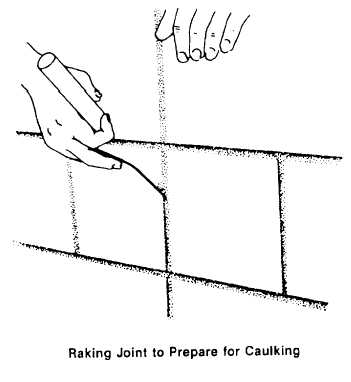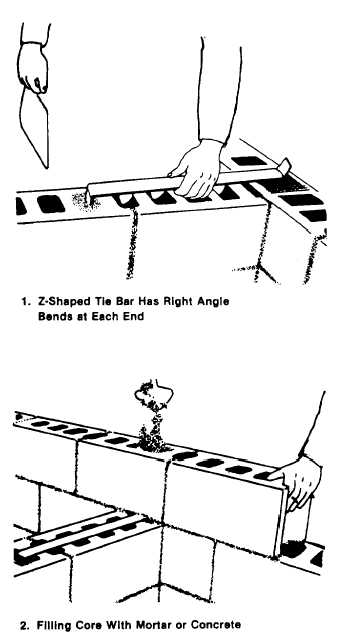
Figure 8-21.-Making a control joint.
they are exposed to either the weather or to view, caulk them as well. After the mortar is stiff, rake it out to a depth of about 3/4-inch to make a recess for the caulking compound. Use a thin, flat caulking trowel to force the compound into the joint (figure 8-21).
The location of control joints is established by the architectural engineer and should be noted in the plans and specifications.
WALLS
Walls are differentiated into two types: load bearing and nonload bearing. Load-bearing walls not only separate spaces, but also provide structural support for whatever is above them. Nonload bearing walls function solely as partitions between spaces.
Load-bearing Walls
Do not join intersecting concrete block load- bearing walls with a masonry bond, except at the corners. Instead, terminate one wall at the face of the second wall with a control joint. Then, tie the intersecting walls together with Z-shaped metal tie bars 1/4-by-1/4-by-28 inches in size, having 2-inch right-angle bends on each end (figure 8-22, view 1).

Figure 8-22.-Tying intersecting bearing walls.
Space the tie bars no more than 4 feet apart vertically and place pieces of metal lath under the block cores that will contain the tie bars ends (figure 8-18, view 1). Embed the right-angle bends in the cores by filling them with mortar or concrete (figure 8-22, view 2).
Nonload-bearing Walls
To join intersecting nonload-bearing block walls, terminate one wall at the face of the second with a control joint. Then, place strips of metal lath of
Continue Reading